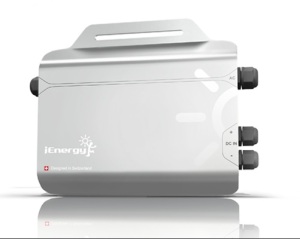Solar power technology seems very complicated, a lot of detail, but when you consider their broadest level rooftop solar photovoltaic systems, they are actually very simple. Typically, a small-scale grid-connected rooftop solar PV system only has two main components: panels, and Solar Inverter wholesale. Off-grid system is only slightly more complex, with battery as well, so that homeowners can put their lights after the sun goes down.
Drive your heart sitting rooftop solar systems. This requires energy your solar panels produce, and it has changed the form of your lights and appliances can be used. Without it, you run the panel is useless purpose of your home.
Solar inverter also play a role in ensuring that your photovoltaic panels to generate as much power as they can be called "maximum power point tracking," or the process of the MPPT. The solar panel will provide different resistances at different power loads, and resistance, to provide the maximum amount of the amount of power required depends on the temperature and the panel can receive solar radiation level. Through MPPT, the inverter will determine which load is placed on the panel array to provide the maximum power in view of the current situation.
Solar inverters are often in the role of the report system performance. This can be very useful to track the return on investment to go solar. Some even inverter hooked to your home wireless network, so you can log in and look at your system from your computer or smartphone to do.
Some systems connect to each panel having a small inverter - this is called "micro-inverters." This can be used in many applications are useful. Each plate has its own maximum power point tracking, which means that the desired loading will be applied to each of the panel to ensure that the maximum power output. This also means that the array of solar panels can be added to or reduced in size over time, with changes in the field of electricity demand. It further means that fewer system offline in case of equipment failure.
There are two main types of inverters, as a large central string inverters and micro-inverters. A standard system will have a central inverter connected to it with all the other solar panel. The use of micro-inverters will allow each solar panel is separate from the next, to minimize shadows caused by the potentially harmful effects of solar photovoltaic systems. These systems have many advantages over conventional systems of the potential advantages of flexibility in system design, safety and financial aspects of the yield. Thus, the growing popularity of such systems.

Micro-inverters generally means that they have no moving parts for longer life than conventional inverter. Most manufacturers offer micro-inverters compared with 20-year standard warranty, 5-10 years of traditional counterparts.
Standard string inverters generally by two separate strings. This means that, in a normal 4kW mounting plate 16 comprises, the system will be divided into two groups of 8 panels. The micro system enables each individual solar panels, to be linked in parallel, independently of each other and therefore minimize potential adverse effects of the shadow.
All micro-inverter unit is equipped with an advanced on-line monitoring system that allows end-users and installers in the detailed monitoring of each solar panel from any location with internet access. Users will be able to monitor the generated daily, weekly, monthly and annual electricity power production site in detail.
No comments:
Post a Comment